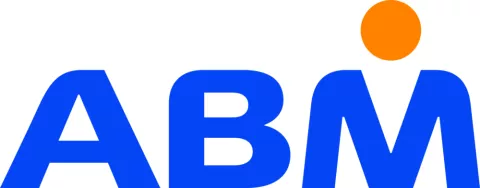About Fenix Marine Services
Fenix Marine Services operates one of the largest import/ export container terminals in the Port of Los Angeles, the busiest seaport in the Western Hemisphere. Located on the port’s Terminal Island, the 300-acre Fenix terminal has 4 1,000-foot cargo ship berths, 16 container cranes, 49 tophandlers, 200 yard tractors, 23 truck lanes, and 8 rail tracks serviced by the BNSF and Union Pacific railroads. The Fenix team carries out over one million lifts — approximately 2 million TEUs (twenty-foot equivalent units) — each year.
Challenges
In 2018, Jeff Brown, a Senior Manager of HSSE at Fenix, initiated a process for selecting EHS software to replace multiple, disparate technologies used to capture and track data from incident investigations, safety and environmental inspections, and safety audits.
An email-based process for collecting incident investigation details and photos that was inefficient for Fenix managers was also cumbersome for the safety team, which had to spend time copying and pasting in order to analyze the data. Likewise, paper forms used by Fenix managers to capture safety and environmental inspection information also required the safety team to convert data from completed documents for use in reporting and analysis.
Fenix leadership was also looking to more fully engage the Fenix workforce with the company’s safety practices and protocols. Part of this process would be equipping managers with tools for performing safety audits designed to enforce safe workplace behaviors, help to foster hazard recognition, and speed response time in acting to correct identified issues.
Given the size of the terminal and because workers’ jobs require them to perform duties at throughout the terminal during the course of a shift, this meant a technology platform that included intuitive mobile functionality.
To find the right solution and foster buy-in throughout the organization, Brown assembled a team that included senior managers, first-level managers, and others who could also help to evaluate the functionality and ease of use of potential EHS solutions that Fenix could use to improve safety performance.
Solutions
After speaking with peer members of the National Maritime Safety Association (NMSA) to get their input on software systems, viewing multiple demonstrations from different vendors, and testing out functionality in “sandbox” environments, Fenix Marine Services selected Origami
Risk as the technology solution for capturing incident and investigation details, performing safety audits, analyzing and reporting on data, and more.
Along with the Origami Risk platform’s features, configurability, and ease of use, Origami’s track record of success in working with other companies in the marine cargo handling industry came into play when making the decision. “The fact that Origami had experience in our industry was really helpful,” says Brown. “It gave me a sense that it wouldn’t be such a heavy lift to apply that technology to our business.”
- Mobile App: Fenix managers are now able to use the Origami Risk Mobile Forms app to capture data (and attach photographs, videos, or other supplemental documentation) from any location within the 300- acre terminal. Incident investigation, inspection, and safety audit data entered using the app is encrypted in a user’s phone or tablet, where it’s securely stored until an internet connection is available and data is submitted.
- Incident Investigations & Inspections: Using mobile forms configured in Origami Risk’s integrated system administration module, Fenix set up intake screens for their incident investigations and safety inspections. Accessible to Fenix’s 60+ managers via the mobile app, these forms guide the entry of information through the use of required fields, drop- down code lists, and prompts for confirmation that simplify entry and improve data quality.
- Safety Audits: Fenix managers are now using audit collection functionality tailored to meet the requirements of the Fenix safety team. In addition to defining data quality controls configured in the platform’s integrated system administration module, Fenix is using customized tooltips that provide clear direction to managers as they complete safety audits using the mobile app.
- Dashboards & Analytics: With data from incidents, incident investigations, inspections, and safety audits in a single system, the Fenix safety team is able to put that data to work by using Origami Risk’s integrated dashboards and analytics to pinpoint hazard and incident “hot spots” throughout the terminal, identify trends, target preventative strategies, track engagement, and more.
- Automated Workflows: Origami Risk’s automated workflow tools are being used by Fenix to improve communication while also reducing administrative overhead and fostering accountability. For example, Fenix has set up alerts that notify members of management when an incident occurs. And in the event that Fenix must file an employer complaint to the Pacific Maritime Association (PMA), an automated email is sent to designated recipients at PMA and the complaint is attached to the related incident record in the system.
Results
Time Savings & Responsiveness
In addition to increased engagement fostered by equipping managers with tools for performing incident investigations, inspections, and safety audits, the Fenix safety team is using Origami Risk to reduce the number of time-consuming and repetitive tasks for which they are responsible.
Automation of the process for filing employer complaints to the PMA is one example of how Fenix is applying technology to eliminate what previously required multiple, manual steps. This means less work for the safety team and means that PMA has the relevant information they require much sooner. Brown and team have also streamlined reporting of information in Fenix’s incident reports that correlate to a Department of Labor reporting form. “The process used to involve taking the incident report, copying details, and sending to the adjuster who would then send it on to the government,” says Brown. “Now, we do the incident report, the data that needs to be on the form is automatically entered and submitted through the upload of the incident which goes to workers comp adjusters and generates the form that gets submitted to the government.”
Because Origami Risk’s integrated system administration module allows designed client users with the appropriate security permissions to make changes in the system, the Fenix safety team is also able to respond more quickly to requests from senior management and front-line managers. For example, at the outset of the COVID pandemic the team was able to set up and disseminate mask audits that ensured compliance with California mandates.
Better Visibility Into Safety Activities
According to Brown, the combination of improvements in the quality of data related to incidents, incident investigations, inspections, and safety audits and the platform’s integrated dashboards and analytics tools is, along with the Mobile app, functionality that stood out during software selection process and that continues to deliver. “With Origami Risk, our data came to life,” says Brown. “We’re able to see, interpret and analyze, and act upon safety concerns like never before.”
In addition to the configurable dashboard widgets that the safety team uses to track the locations of reported incidents and hazards, display incidents based on severity scores, safety audits by department, and more, the safety team has also been able to tailor dashboards for specific users, including department heads. This allows them to track levels of engagement and view real-time safety information.
Increased Engagement, Improved Outcomes
For the Fenix management team, a driving force behind the need for an integrated technology solution for capturing and tracking data from incident investigations, safety and environmental inspections, and safety audits was the goal of improving engagement with established safety procedures and protocols.
“Prior to the move to Origami Risk, managers had to take notes or remember what they’d seen then sit down at the computer to enter details,” says Brown. Equipped with the Origami Risk Mobile Forms app, Fenix managers are now able to quickly capture details on the go as they perform incident investigations, safety and environmental inspections, and safety audits throughout the terminal.
To further improve levels of engagement, Fenix has also incorporated Origami Risk into the process of training front- line managers. More than an introduction to the technology solution they will be using, this provides a “hands-on” best practice learning experience.
One of the measurements of engagement is the number of safety audits that the 60+ Fenix managers perform. According to Brown, managers are currently completing between 200-400 audits each week. During a single week in February 2022, managers submitted a record 560 audits. As noted below, the volume of safety audits completed has a demonstrable impact on workplace safety.
According to Brown, there is a direct correlation between safety audit volume, safety compliance rates, the total number of incidents, and the impact on worker safety and productivity. “On any given week, if there are 400 audits done, we see anywhere from 94% to 98% compliance,” he says. “Our lost time incident rate went down when we started doing more audits.”
Conclusion
As the company’s mission statement makes clear, Fenix Marine Services values the safety of the company’s workforce, community, and environment:
Our Mission is to rapidly deploy value creation strategies that drive growth, while never compromising on safety. We will transcend conventional global port and logistics industry thinking to deliver best-in-market value to our customers and investors, while protecting our community, environment, and workers.
Today, with effective tools that ensure managers are always thinking about safety and the safety team is able to focus on analysis that is resulting in further improvements, the 1,000+ people who work throughout the terminal every day find themselves in an environment that is safer than ever before.




